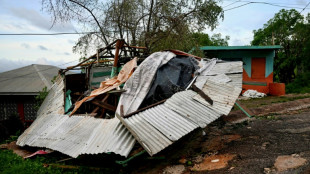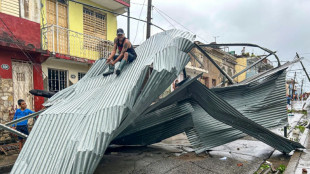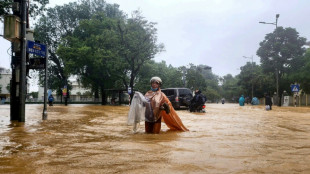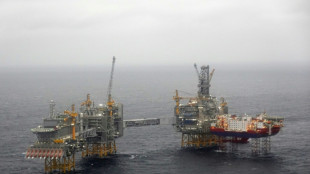
-
 Volkswagen posts 1-billion-euro loss on tariffs, Porsche woes
Volkswagen posts 1-billion-euro loss on tariffs, Porsche woes
-
'Fight fire with fire': California mulls skewing electoral map

-
 Fentanyl, beans and Ukraine: Trump hails 'success' in talks with Xi
Fentanyl, beans and Ukraine: Trump hails 'success' in talks with Xi
-
'Nowhere to sleep': Melissa upends life for Jamaicans
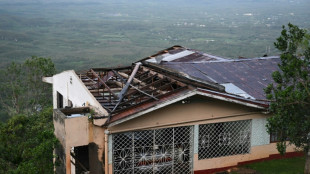
-
 Irish octogenarian enjoys new lease on life making harps
Irish octogenarian enjoys new lease on life making harps
-
Tanzania blackout after election chaos, deaths feared

-
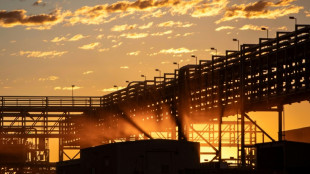 G7 meets on countering China's critical mineral dominance
G7 meets on countering China's critical mineral dominance
-
Trump hails tariff, rare earth deal with Xi

-
 Court rules against K-pop group NewJeans in label dispute
Court rules against K-pop group NewJeans in label dispute
-
India's Iyer says 'getting better by the day' after lacerated spleen

-
 Yesavage fairytale carries Blue Jays to World Series brink
Yesavage fairytale carries Blue Jays to World Series brink
-
Bank of Japan keeps interest rates unchanged

-
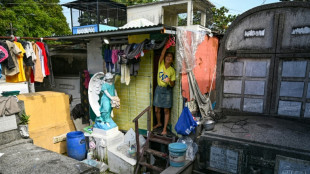 Impoverished Filipinos forge a life among the tombstones
Impoverished Filipinos forge a life among the tombstones
-
Jokic posts fourth straight triple-double as Nuggets rout Pelicans

-
 UN calls for end to Sudan siege after mass hospital killings
UN calls for end to Sudan siege after mass hospital killings
-
Teenage Australian cricketer dies after being hit by ball

-
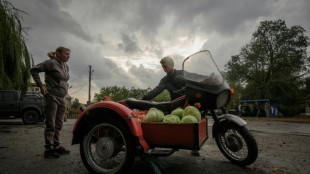 As Russia advances on Kupiansk, Ukrainians fear second occupation
As Russia advances on Kupiansk, Ukrainians fear second occupation
-
Trade truce in balance as Trump meets 'tough negotiator' Xi

-
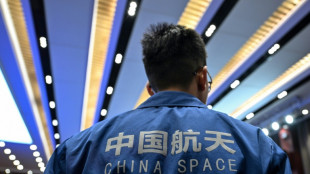 China to send youngest astronaut, mice on space mission this week
China to send youngest astronaut, mice on space mission this week
-
Yesavage gem carries Blue Jays to brink of World Series as Dodgers downed

-
 With inflation under control, ECB to hold rates steady again
With inflation under control, ECB to hold rates steady again
-
Asia stocks muted with all eyes on Trump-Xi meeting

-
 Personal tipping points: Four people share their climate journeys
Personal tipping points: Four people share their climate journeys
-
Moto3 rider Dettwiler 'no longer critical' after crash: family

-
 US economy in the dark as government shutdown cuts off crucial data
US economy in the dark as government shutdown cuts off crucial data
-
Trump orders nuclear testing resumption ahead of Xi talks

-
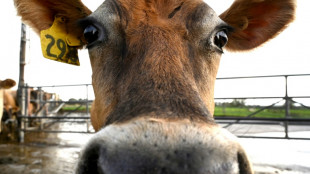 'Utter madness': NZ farmers agree dairy sale to French group
'Utter madness': NZ farmers agree dairy sale to French group
-
Samsung posts 32% profit rise on-year in third quarter

-
 30 years after cliffhanger vote, Quebec separatists voice hope for independence
30 years after cliffhanger vote, Quebec separatists voice hope for independence
-
Taxes, labor laws, pensions: what Milei wants to do next

-
 South Sudan's blind football team dreams of Paralympic glory
South Sudan's blind football team dreams of Paralympic glory
-
US says 4 killed in new strike on alleged Pacific drug boat

-
 What we do and don't know about Rio's deadly police raid
What we do and don't know about Rio's deadly police raid
-
'They slit my son's throat' says mother of teen killed in Rio police raid

-
 Arteta hails 'special' Dowman after 15-year-old makes historic Arsenal start
Arteta hails 'special' Dowman after 15-year-old makes historic Arsenal start
-
Google parent Alphabet posts first $100 bn quarter as AI fuels growth

-
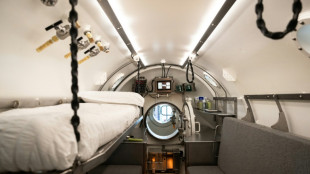 Underwater 'human habitat' aims to allow researchers to make weeklong dives
Underwater 'human habitat' aims to allow researchers to make weeklong dives
-
Maresca slams Delap for 'stupid' red card in Chelsea win at Wolves

-
 'Non-interventionist' Trump flexes muscles in Latin America
'Non-interventionist' Trump flexes muscles in Latin America
-
Slot defends League Cup selection despite not meeting 'Liverpool standards'

-
 'Poor' PSG retain Ligue 1 lead despite stalemate and Doue injury
'Poor' PSG retain Ligue 1 lead despite stalemate and Doue injury
-
Liverpool crisis mounts after League Cup exit against Palace

-
 Kane scores twice as Bayern set European wins record
Kane scores twice as Bayern set European wins record
-
Radio Free Asia suspends operations after Trump cuts and shutdown

-
 Meta shares sink as $16 bn US tax charge tanks profit
Meta shares sink as $16 bn US tax charge tanks profit
-
Dollar rises after Fed chair says December rate cut not a given

-
 Google parent Alphabet posts first $100 bn quarter as AI drives growth
Google parent Alphabet posts first $100 bn quarter as AI drives growth
-
Rob Jetten: ex-athlete setting the pace in Dutch politics

-
 Juve bounce back after Tudor sacking as Roma keep pace with leaders Napoli
Juve bounce back after Tudor sacking as Roma keep pace with leaders Napoli
-
Favorite Sovereignty scratched from Breeders' Cup Classic after fever


Chinese sub discovers deepest-ever creatures 10 km undersea
A Chinese submersible has discovered thousands of worms and molluscs nearly 10 kilometres (six miles) below sea level in the Mariana Trench, the deepest colony of creatures ever observed, a study revealed on Wednesday.
The discovery in Earth's deepest underwater valley suggests that there could be much more life thriving in the hostile conditions at the bottom of our planet's largely unexplored oceans than previously thought, the China-led team of scientists said.
Almost all life on Earth is supported by light from the Sun. However in the total darkness at the bottom of the world, these creatures live off of chemicals such as methane seeping through cracks in the seafloor, a process called chemosynthesis.
Last year, the Chinese submersible "Fendouzhe" -- or "Striver" -- dove 23 times into the depths of the Mariana Trench in the western Pacific Ocean with researchers on board, according to the study in the journal Nature.
They found colonies of thousands of marine tubeworms and molluscs called bivalves at depths ranging from 2,500 to 9,533 metres (8,200 to 31,000 feet) deep.
Video released alongside the study showed fields of tubeworms, which grew up to 30 centimetres (12 inches) long, as well as piles of molluscs and clams.
Spiky crustaceans, free-floating marine worms, sea cucumbers, feathery-armed sea lilies and other invertebrates were also recorded in the depths.
The study marked "the discovery of the deepest and the most extensive chemosynthesis-based communities known to exist on Earth," its authors said.
Given that other ocean trenches are similar, "such chemosynthesis-based communities might be more widespread than previously anticipated," they added.
The researchers said they also found "compelling evidence" that methane was being produced by microbes, with the tubeworms tending to cluster around microbial mats that resemble snow.
Previous studies have found thriving communities of single-cell organisms on the ocean floor, but few large animals.
But a remotely operated vehicle discovered tubeworms and other marine invertebrates living in hydrothermal vents in the crust below the seafloor two kilometres deep in the Pacific, research said last year.
- Pressure rising -
The new study was published as nations wrangle over the contentious issue of deep-sea mining. China, the United States and others have expressed interest in mining the depths for valuable minerals.
Ocean scientists warn that mining the little-explored seafloor, one of the last wild zones on the planet, could decimate fragile ecosystems that are not yet well understood.
Despite recent talks, the International Seabed Authority -- which oversees deep-sea mining in international waters -- has yet to adopt long-awaited rules governing the industry.
Chinese media has previously reported that the Fendouzhe submersible mission will conduct research on "deep-sea materials".
Only a handful of people have ever visited the bottom of the Mariana Trench, which is a crescent-shaped depression in the Earth's crust that is deeper than Mount Everest is high.
The first explorers visited the trench in 1960 on a brief expedition.
But after that, there were no missions until Hollywood director James Cameron made the first solo trip to the bottom in 2012, describing a "desolate" and "alien" environment.
The water pressure at the bottom of the trench is a crushing eight tons per square inch, more than a thousand times the atmospheric pressure at sea level.
R.Fischer--VB

